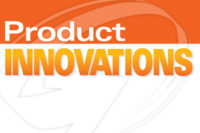Tech wearables and smart PPE take the guesswork out of safety

There’s a strong case to be made for wearable technology when it comes to promoting worker safety, especially in distribution and the warehouse.
Continuous measurement of biometrics such as body temperature, heartrate and respiration has provided valuable new insights into human health.
Ishan Sehgal, program director for Watson IoT Solutions with IBM, says that ability can now be applied to workplace safety programs. In the process, it can help to eliminate accidents caused by over-exertion of workers.
Useful devices include wristbands, helmets, hardhats and “smart” clothing, all equipped with sophisticated sensors. According to IBM, they can “capture biometric and environmental data to identify when a worker has fallen; shut down machinery if a worker gets too close; monitor changes in temperature or air quality, and even flag if a worker’s vital signs indicate sickness at the start of a shift — putting them at higher risk of an accident.”
IBM doesn’t see the technology as a replacement for traditional safety programs — rather a means of improving implementation of those policies, “by removing the guesswork and the unpredictable from the equation.”
Sehgal says the devices can be applied in a wide variety of commercial and industrial environments, including warehouses, outdoor operations, mining and construction sites.
He acknowledges the technology is still relatively new. Most adopters are experimenting with use cases and pilots to determine where the devices are most practical to deploy.
The price of the equipment for industrial use is relatively low, says Sehgal, due in part to years of industry reliance on safety aids such as gas detectors, warning lights, motion detectors and vests. Some of the latest sensor technology arose from the use by hobbyists of inexpensive computers such as the Raspberry Pi, or the prototyping and development platform known as Nordic Thingy. Now it’s being combined with the modern-day artificial intelligence capabilities of IBM’s Watson.
Aatmunn is a manufacturer of smart helmets that has been working closely with IBM to combine hardware and software into an integrated monitoring system. With origins in the mining industry, the product can track biometric signs as well as environmental measurements such as ambient gas. Worker insights and other data can then be uploaded to the cloud for analysis, Sehgal says.
Some training in the use of the new devices is required, although most users have sought to minimize alterations in their day-to-day processes, Sehgal says. In certain instances, changes become necessary, such as ending the practice of workers drawing a hardhat at random, then tossing it into a bin at the end of a shift.
Beyond moment-to-moment monitoring, the devices generate data that can help managers gain a broader picture of worker performance, site conditions and trends in productivity and health. That’s where the analytics capability of a tool like Watson comes in.
The growing use of sensor-equipped wearables raises issues of privacy, however. Will workers come to feel that the monitoring is overly intrusive?
IBM says it doesn’t keep or control the data, and strives to comply with strict new data-protection measures such as the European Union’s General Data Protection Regulation (GDPR). In addition, Sehgal says, the tools provide users with the option of purging data at the end of a day, shutting off monitoring capability during break periods, and otherwise ensuring anonymity in off-the-job situations.
Companies seeking to deploy the new generation of wearables will need to educate their workers in their use and limitations. The value, says Sehgal, lies in eliminating such “pain points” as on-the-job injuries and unplanned downtime on critical equipment, with the end goal of boosting productivity.
IBM expects the lure of the technology to attract greater interest by business in years to come, as the price of the devices continues to drop, and the system’s ability to process immense amounts of data increases. It’s all about the relentless progress of A.I., which Sehgal defines as “making the data connection, collection and analytics around the Internet of Things more available and easier across a broader range of use cases.”
Source: supplychainbrain.com
Looking for a reprint of this article?
From high-res PDFs to custom plaques, order your copy today!






